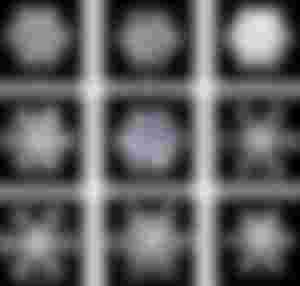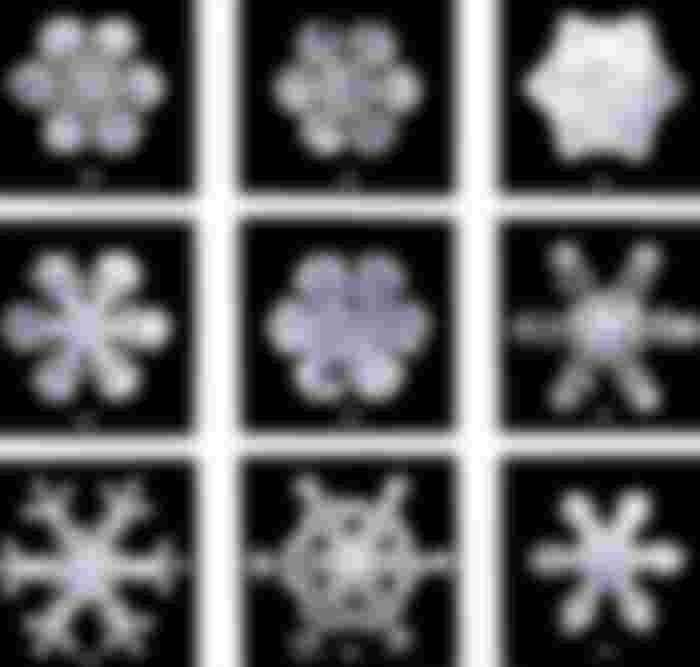Wilson Bentley's enthusiasm for snowflakes has existed since he was a child. He called them "little wonders of beauty" and "ice flowers", and at the age of 15, looking through a microscope given to him by his mother, he tried to draw their enchanting structures. Five years later, one of the snowflakes that formed on January 15, 1885, in the sky above his hometown of Jericho, Vermont, he greeted on a comfortable black velvet and placed under a microscope that was mounted next to a large camera. This is how the first known photograph of a snowflake was created. As Bentley did not marry or leave his hometown, it can be said that he dedicated his life to snowflakes leaving behind more than 5,000 photos of them. Noticing that all those photos of snowflakes were different, he allowed us to exploit his discovery as one of the most famous metaphors. It's a metaphor that compares snowflakes to people in terms of variety, asking us to look at each other a little more patiently.
The construction of metaphors around natural phenomena such as the behavior of water is no less interesting and diverse than the diversity of snowflakes. For example, writing about a paper published in the journal Nature in 1988 by immunologist Jacques Benveniste, journalists coined the term "water memory" in an attempt to explain his thesis as briefly as possible. Benveniste's work contained unusual results of experiments according to which water retains the properties of antibodies with which it was in contact even when they are absolutely no longer in it. However, when Nature's editor John Maddox, chemist Walter Stewart and James Randy wanted to check his results as a well-known fighter against charlatanism and pseudoscience, the situation became complicated. Repeating the procedure under controlled conditions of a double-blind experiment in which Benveniste could not know which water contained antibodies, the results were completely absent. It was clear that Benveniste had deceived the scientific community, but his likeable idea continued to attract an audience, so at one point he received the support of even two Nobel laureates. He refused to admit fraud, and in 1990 he went a step further, claiming that he had found a way to turn water memory into an electrical signal that could be sent over a telephone line and thus make healing water at the other end of a telephone connection. Although James Randy was willing to pay $ 1,000,000 if Benveniste could confirm his results under controlled conditions, he never opted for such a check.
Masaru Emoto made Benveniste's idea even more picturesque and romantic, claiming that "water contains a blueprint for our reality." Since 1990, Masaru has delighted the public with alleged evidence that very vividly showed that water crystallizes into harmonious or inconsistent crystals, depending on whether it is sung or shouted at during the process. Of course, the offer he received from Randy, to repeat his results with a million compensation, he resolutely refused. Not only did he refuse offers to test his experiments, but he also rejected any serious argument with jokes and word games that aroused sympathy in his loyal audience. When asked, for example, why they refused to repeat the procedure under the conditions of a double-blind experiment, he replied that we were created with two eyes to see, not to be blind.
When science points out omissions in such romantic malversations, it is usually greeted with disapproval by the followers of such ideas as someone who is trying to tear down their castle in the sand. Although tearing down a castle in the sand can seem cruel, it is there to protect us from deception, and in addition, science in the process always offers us its own version of the story, which is inevitably even more magical. True, her story is sometimes harder to follow, because it requires us to get acquainted with physics, chemistry, mathematics, but the effort we put in is always rewarded many times over. The shape of water molecules and the hydrogen bonds that are formed between the molecules are just the beginning of the story about the unusual properties of water, and they are also the beginning during the formation of every snowflake, which is always hexagonal precisely because of those properties. From that basis, the stories about the specific thermal capacitance of water are further branched, due to which the temperature of the lake changes minimally during the year, enabling the survival of life in them. It is at the expense of the energy needed to break the hydrogen bonds during the evaporation of water that our body cools down by sweating. Hydrogen bonds contribute to the cohesion of polar water molecules crucial for the transpiration process in plants. The fact that due to hydrogen bonds, water expands during freezing and remains on the surface as an insulator, preventing further freezing, leaves us with the question of whether life on earth would be possible without this seemingly insignificant feature. At the same time, this series did not even scratch the layer of miraculous stories about how science sees water, which are becoming even richer every day. The greatest wealth of these stories is precisely in those places where science admits that there are still no answers and where, wondering how exactly the snowflakes crystallize, they send us an invitation to join the adventure of writing another story.


Would love to see that collection of snowflakes one day. It might be beautiful and i do think their forms have changed now since the kinds of particles in air differs so much now than it did before